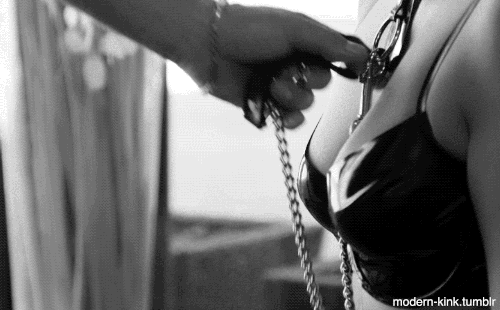An outsider looking in at a BDSM relationship might believe that the sub is suffering in a long-term abusive relationship. Kink relationships are not inherently abusive. Those who understand the power dynamics at play know that the dom and sub have negotiated exactly what is and isn’t OK. However, not all those who participate in the dominant role are on the up and up, nor are subs always down to play postively.
If you’re not enjoying your BDSM relationship as much, or you’re wondering if some behaviors should count as red flags of abuse, keep reading. Your instinct may be correct.
Isolation
One of the most common red flags of abuse for any sort of relationship is when the abuser tries to isolate you from your support. That support group could be friends, family, or even a BDSM community. If a partner is questioning why you need to go see such-and-such, or whether they’re enough for you, you can count this as a red flag.
If a partner is able to isolate you from a community of support, then you won’t have anyone to lean on, to talk to, and to find out whether you’re in a healthy or abusive relationship.
Ignored Boundaries
In BDSM relationships, the safe word is a must. It’s a way for a sub to express that the dom is going too far and nearing or crossing a boundary. Generally, a dom can push their sub’s limits to help advance the play, the relationship, and trust. However, when a dom “forgets” the boundaries, or flat-out ignores them, this could very well be a sign of abuse.
Gaslighting
Regardless of whether you’re the dom or sub, gaslighting is an abusive behavior that anyone can exhibit. The act of manipulating someone to make them question their sanity is the exact definition of gaslighting. This can happen in several ways. Someone may question your memory of an event, say it went another way, and convince you that it was. They may even falsify evidence of such to help convince you. This is undoubtedly abusive behavior.
In Harm’s Way
The dominant partner in a BDSM relationship holds a lot of power, and therefore responsibility. That person should never put their sub in a dangerous situation, and if they do knowingly, this could be a sign of abuse. As a sub, you should be able to voice your opinion, set your boundaries, and expect your master or mistress to respect your wishes.
Emotional Abuse
Physical abuse is more clearly recognized, as a dom may cross lines in the name of domination and ignore the safe word from a sub. However, emotional abuse is a cloudy, blurred arena in the world of BDSM. What it comes down to is trust. Ask yourself after a scene how you feel. Was the pain you experience erotic or painful? Do you feel shame or humiliation after a scene?
If you believe you are in an abusive relationship, BDSM or otherwise, you can contact the National Domestic Violence Hotline at 1-800-799-7233.




